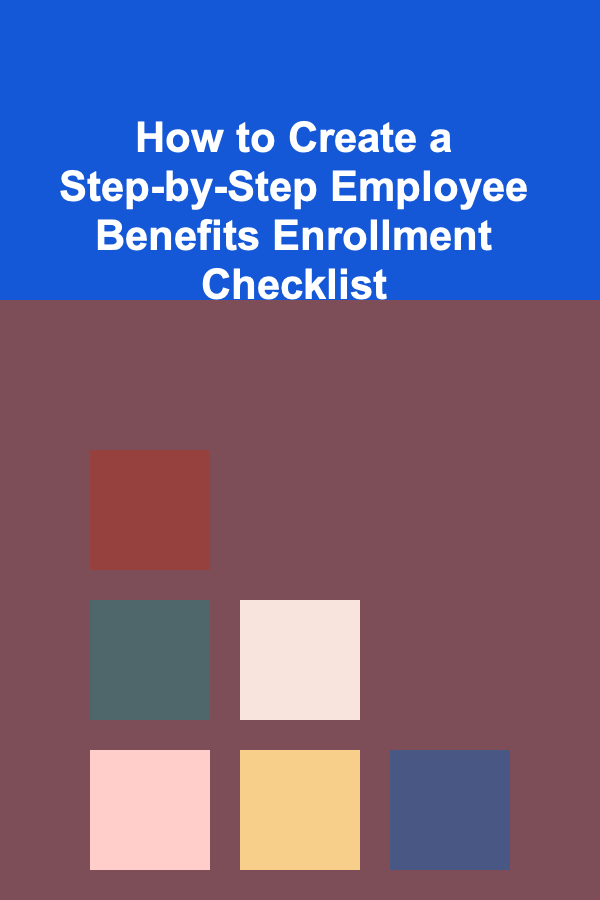
Crafting the Perfect Resume: What Employers Really Look For
ebook include PDF & Audio bundle (Micro Guide)
$12.99$10.99
Limited Time Offer! Order within the next:

A resume is often the first impression you make on a potential employer. It serves as a gateway, showcasing your qualifications, experience, and personality in a concise, professional format. While many job seekers focus solely on listing their previous positions and skills, crafting the perfect resume requires much more. To truly stand out in today's competitive job market, you need to understand what employers are really looking for when they review resumes.
This guide will explore the key elements that employers focus on when evaluating resumes, and offer actionable tips on how to create a resume that captures their attention and boosts your chances of landing your next job.
Clear and Professional Formatting
The first thing an employer will notice when reviewing your resume is its formatting. The way your resume looks plays a significant role in whether or not it gets read. If your resume is cluttered, difficult to navigate, or poorly organized, it could quickly be dismissed, regardless of your qualifications.
Actionable Tips:
- Keep it simple and clean: Choose a professional, easy-to-read font like Arial or Calibri, and stick to a font size of 10-12 points for body text. Use bold and italics sparingly to highlight key sections, but avoid excessive styling.
- Use headers and bullet points: Organize your resume into clear sections such as Contact Information, Objective (optional), Experience, Skills, Education, and Certifications. Bullet points help break down information and make it easy to scan.
- Ensure it's ATS-friendly: Many companies use Applicant Tracking Systems (ATS) to scan resumes before they're seen by a human. Use standard formatting, avoid complex tables or graphics, and incorporate relevant keywords from the job description to ensure your resume passes ATS screenings.
Why This Matters:
Employers and recruiters often sift through hundreds of resumes, so if your resume isn't well-structured, it could be dismissed within seconds. A clean, easy-to-navigate resume shows that you value clarity and professionalism.
Tailored Content That Speaks to the Job Description
One of the most common mistakes job seekers make is sending out the same generic resume to every employer. While it might seem efficient, this approach rarely works. To truly capture an employer's attention, you need to tailor your resume to the specific job you're applying for.
Actionable Tips:
- Analyze the job description: Carefully read the job posting and identify the key skills, qualifications, and responsibilities required. Incorporate these keywords and phrases into your resume, especially in your skills and experience sections, to demonstrate that you're a perfect fit.
- Highlight relevant experience: If your previous work experience doesn't directly align with the role you're applying for, focus on transferable skills that can be applied to the new position. For instance, if you're transitioning from a marketing role to a sales position, emphasize your communication skills, client relationship management, and strategic thinking.
- Use quantifiable achievements: Employers love numbers because they provide tangible proof of your contributions. Where possible, include metrics that showcase your impact. For example, "Increased sales by 20% within the first six months" or "Managed a team of 10 employees to deliver a project 30% ahead of schedule."
Why This Matters:
Employers want to know that you understand the role and how your specific experiences make you an ideal candidate. A tailored resume speaks directly to their needs, making it easier for them to see why you're a good fit for the position.
Strong Professional Summary or Objective (Optional)
A professional summary or objective at the top of your resume gives employers a quick overview of who you are and what you bring to the table. This section is optional but can help make your resume stand out, especially if you're transitioning into a new industry or have a varied career background.
Actionable Tips:
- Professional summary: If you have years of relevant experience, write a brief, impactful summary of your professional background. Focus on your key strengths and achievements in a few sentences, and tailor it to the specific job you're applying for.
- Objective statement: If you're new to the workforce or changing careers, consider an objective that highlights your enthusiasm and goals. Keep it concise and specific, such as "Seeking a marketing position where I can utilize my communication skills and creative problem-solving to drive brand growth."
- Keep it concise: Avoid writing a lengthy paragraph. A short, compelling summary is all you need to grab the reader's attention.
Why This Matters:
Your professional summary or objective sets the tone for the rest of your resume. It provides employers with a snapshot of your qualifications and what you hope to achieve, which can help them quickly assess whether you're worth pursuing further.
Detailed Work Experience
When it comes to your work history, employers want to know not only where you've worked, but also what you've done and how well you've done it. The work experience section is the meat of your resume, and it's crucial that you present it in a way that highlights your skills and achievements.
Actionable Tips:
- List positions in reverse chronological order: Start with your most recent job and work backward. Include the job title, company name, location, and dates of employment.
- Focus on accomplishments, not just responsibilities: Don't just list what you were responsible for. Show how you excelled in your role by detailing specific achievements. Use action verbs like "led," "improved," "implemented," and "increased."
- Be specific and concise: For each job, use bullet points to outline your achievements. Focus on 3-5 key points that highlight your skills and impact, and avoid lengthy paragraphs.
Why This Matters:
Employers are most interested in your professional experience because it demonstrates your ability to perform in the role you're applying for. By showcasing your achievements and impact, you prove that you can deliver results and add value to the company.
Relevant Skills and Competencies
The skills section of your resume allows you to highlight both technical and soft skills that make you an asset to the employer. Employers often use this section to quickly assess whether you have the qualifications necessary to succeed in the role.
Actionable Tips:
- Hard skills: These are specific, teachable skills like proficiency in software (e.g., Microsoft Office, Adobe Creative Suite), programming languages, or certifications. List the most relevant hard skills for the job you're applying for.
- Soft skills: These are personal attributes like communication, teamwork, and problem-solving. While harder to quantify, soft skills are still highly valued by employers. Choose the soft skills that align with the job's requirements.
- Avoid generic buzzwords: Phrases like "hardworking" or "team player" are overused and don't add much value. Instead, be specific and focus on skills that are directly relevant to the role.
Why This Matters:
Skills are what allow you to perform the job at hand. By listing both technical and soft skills, you give employers a comprehensive view of your qualifications and show them that you can thrive in the role.
Education and Certifications
Your education and any relevant certifications provide employers with important information about your qualifications. For many positions, a degree is a minimum requirement, while certifications can set you apart from other candidates.
Actionable Tips:
- Include relevant education: List your highest degree first, including the degree type (e.g., Bachelor of Arts in Marketing), the institution's name, and the date of graduation.
- Certifications: If you have any certifications that are relevant to the position (e.g., Certified Project Manager, Google Analytics Certified), be sure to list them in this section.
- Continuing education: If you've taken any courses or attended workshops that relate to the job, include those as well. This shows that you're proactive in enhancing your skills.
Why This Matters:
Education and certifications show that you have the formal qualifications necessary for the role. They also indicate your commitment to professional development, which is a trait employers highly value.
Additional Sections (Optional)
Depending on your career field and the job you're applying for, you may want to include additional sections to further highlight your qualifications.
Actionable Tips:
- Volunteer experience: If you have relevant volunteer experience, include it. It demonstrates leadership, dedication, and a willingness to contribute beyond your immediate job duties.
- Awards and honors: If you've received any professional awards or recognitions, be sure to include them. This can provide evidence of your excellence in your field.
- Languages: If you're multilingual, include a languages section. Employers value candidates who can communicate with diverse teams and clients.
Why This Matters:
Additional sections can provide insight into your personality, values, and qualifications. While these aren't necessary for all resumes, they can add value, especially if they directly relate to the job or industry.
Conclusion
Crafting the perfect resume is about more than just listing your work experience and skills---it's about strategically showcasing your qualifications in a way that speaks directly to what employers are looking for. By focusing on clarity, tailoring your resume to the job, and emphasizing your accomplishments and relevant skills, you can create a resume that makes a lasting impression.
Remember, your resume is a tool to open doors. Take the time to craft it thoughtfully, and you'll increase your chances of landing that next great opportunity.
Reading More From Our Other Websites
- [Organization Tip 101] How to Create a Comfortable and Inviting Workspace
- [Personal Finance Management 101] How to Save for Retirement Even if You're Starting Late
- [Home Rental Property 101] How to Create a Rental Property Lease Agreement That Protects You
- [Personal Financial Planning 101] How to Build Emergency Savings: A Financial Planning Strategy for Unexpected Expenses
- [Organization Tip 101] How to Tackle Product Overload in Your Bathroom Cabinet
- [Organization Tip 101] How to Integrate File Organization with Your Daily Routine
- [Organization Tip 101] How to Avoid Common Plumbing Mistakes and Save Money
- [Home Staging 101] How to Stage a Kitchen to Appeal to Buyers
- [Personal Care Tips 101] How to Use a Facial Scrub for Clearer Skin
- [Home Maintenance 101] How to Clean a Microwave: Easy Methods for a Spotless Appliance

Deep Learning and Passive Income: How to Make It Work
Read More
How to Create a Step-by-Step Employee Benefits Enrollment Checklist
Read More
How to Stage Your Home's Outdoor Space for Entertainment
Read More
How To Introduce Environmental Awareness to Kids
Read More
How to Create the Ultimate Outdoor Movie Night Experience
Read More
10 Tips for Homeowners: A Tax Preparation To-Do List
Read MoreOther Products

Deep Learning and Passive Income: How to Make It Work
Read More
How to Create a Step-by-Step Employee Benefits Enrollment Checklist
Read More
How to Stage Your Home's Outdoor Space for Entertainment
Read More
How To Introduce Environmental Awareness to Kids
Read More
How to Create the Ultimate Outdoor Movie Night Experience
Read More